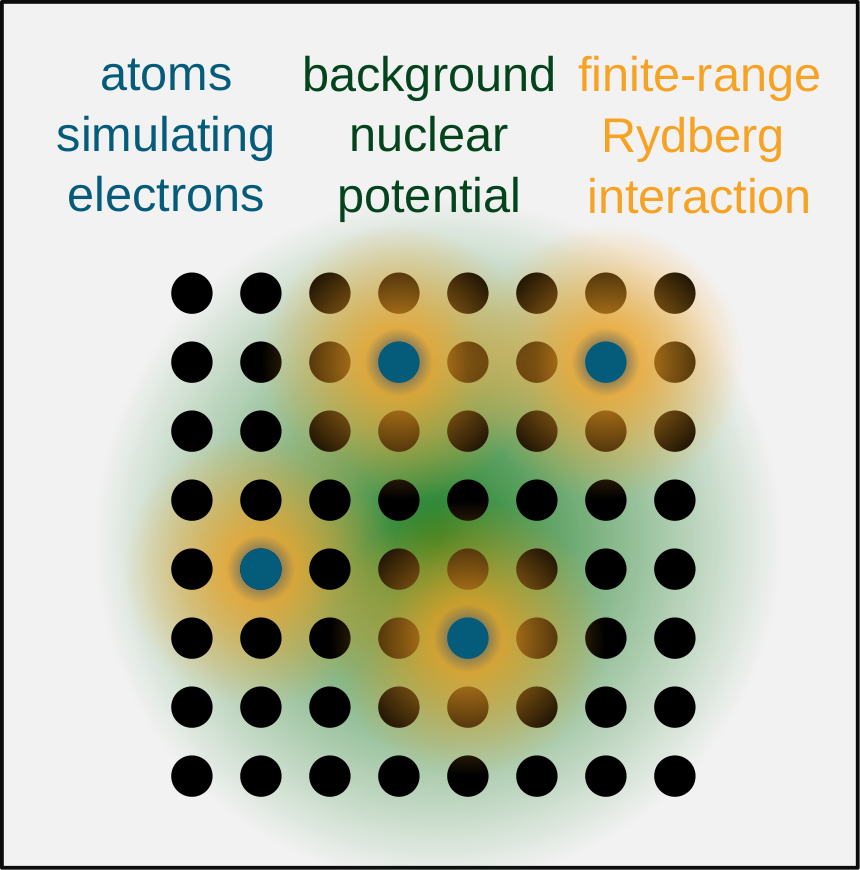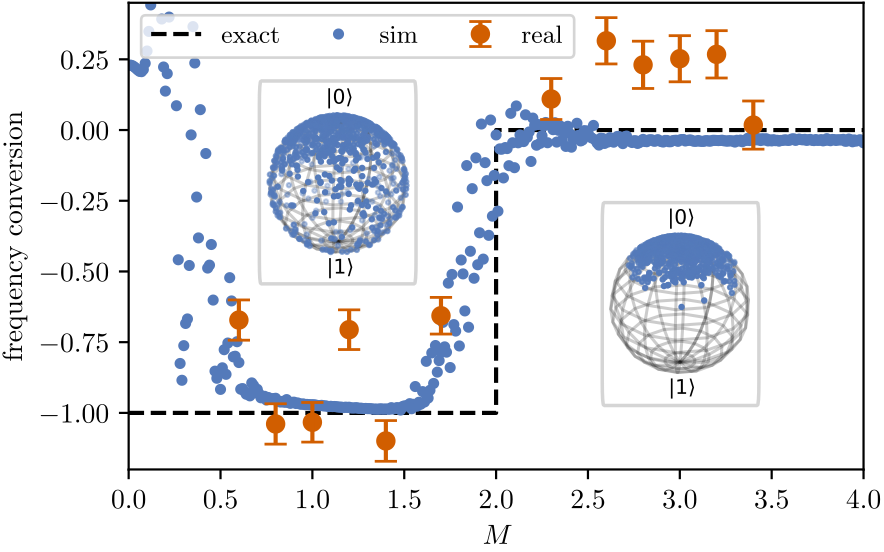Analogue quantum simulation
Table of Contents
Ultracold atoms #
Atoms in optical lattices is an extremely successful platform for analogue quantum simulation. Most experiments with ultracold atoms in optical lattices have contact interactions, and therefore operate at high densities of around one atom per site to observe the effect of strong interactions. My research in this field is concerned with adding long-range interactions to this system.
This is on the one hand a technological challenge. A direction I have explored previously is to use atomic arrays to mediate long-range XY interactions [3]. This is inspired by earlier proposals using nanophotonic structures. This line of research is actively pursued experimentally by Jean-Baptiste Beguin at Copenhagen.
Strong ranged interactions can also be generated via Rydberg dressing, which opens the path to explore the physics of few interacting particles. Rather than the unit cells of a crystal, the sites of the optical lattice can now be interpreted as discretized space. This allows studying completely new types of problems in a familiar architecture. To explore this vision, Ignacio Cirac and I have investigated the possibility of realizing problems akin to those found in quantum chemistry, although with a different scaling law in the interactions. Through numerical simulation, we show that simple pseudo-atoms and -molecules could be prepared with high fidelity in state-of-the-art experiments. [4]
More recently, we have been wondering how one could go beyond quantum gas microscopy and measure currents and other charge-off-diagonal operators in cold-atom experiments [1,2].

- Estimating applied potentials in cold-atom lattice simulators
Kumar, Malz, arXiv:2510.23302 - Gaussian tomography for cold-atom simulators
Kiser, McGinley, Malz, arXiv:2510.23591 - Quantum simulation with fully coherent dipole-dipole interactions mediated by three-dimensional subwavelength atomic arrays
Brechtelsbauer, Malz, PRA (2021), arXiv - Few-Body Analog Quantum Simulation with Rydberg-Dressed Atoms in Optical Lattices
Malz, Cirac, PRXQ (2023), arXiv
Superconducting circuits #
Apart from neutral one of the most promising contender for the future quantum computing platform are superconducting circuits. While the current devices are still far away from fault tolerance, to get here, experimentalists around the world have already devoted intense research on fabricating devices with extremely low noise and an incredible level of control
I’m interested in alternative ways one can use a superconducting quantum devices beyond using them as gate-based “digital” quantum computers. This is motivated by the large amount of freedom one has when interrogating these devices. Rather than understanding them as computers, one can ask questions about the properties and dynamics of the underlying system – arrays of qubits with tunable coupling – and use them for analogue quantum simulation.
As a first step, Adam Smith and I did an experiment with continuous driving of a single superconducting qubit with two incommensurate frequencies [3]. Confirming earlier predictions, this reveals a temporal topological band structure, which ultimately results in topological frequency conversion. The underlying physics is related to another one of my other research interest: periodically driven systems.

We extended this line of work to many qubits, where the hope is that we can very flexibly simulate a large class of time-dependent spin models [4]. We have shown experimentally that our approach works, but is currently still limited by too much frequency disorder. This is a technical rather than a fundamental issue, so we keep pursuing this direction.
- Topological Two-Dimensional Floquet Lattice on a Single Superconducting Qubit
Malz, Smith, PRL (2021), arXiv - Analogue Quantum Simulation with Fixed-Frequency Transmon Qubits
Greenaway, Smith, Mintert, Malz, Quantum (2024), arXiv